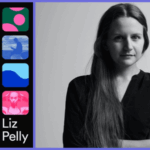The concept of wickedness compels us to examine how we perceive morality and human behaviour. Believing in an irredeemable adversary—someone bent on destruction and beyond negotiation—can focus our resolve in spiritual and ethical battles. This belief inspires the prayerful warrior, strengthens the compassionate caregiver, and emboldens us if we feel mistreated. This perspective reframes and challenges us as part of a larger moral struggle, emphasising that our true adversary is not the frustrating coworker or difficult family member but something more profound and insidious.
Yet, viewing life as a battlefield risks oversimplifying human experience. A combat-ready mindset may mistake differences for hostility or flawed individuals for embodiments of evil. This is exemplified in online behaviour, which is often a battleground of misunderstanding and unfounded vitriole.
While the devil is often depicted as a literal enemy in religious texts or horror stories, he represents metaphorical darkness rather than a tangible foe. Addressing conflict without causing harm requires discernment and humility. As Jesus taught, we are called to love our enemies (Matt. 5:44) and recognise that even those we find difficult share the divine image (Gen. 1:27). This perspective prevents us from reducing people to caricatures of wickedness.
There has defintiely been a shift toward empathy, which has significantly influenced storytelling in the 20th century, transforming how villains are portrayed echoing Jesus’ teaching about removing the log from one’s own eye before criticising others (Matt. 7:1–5).
Writers began reimagining traditional antagonists with deeper, more compassionate backstories. Jean Rhys’s Wide Sargasso Sea reframes Charlotte Brontë’s Bertha Mason—not as the “madwoman in the attic” from Jane Eyre, but as a mistreated Caribbean heiress, shaped by oppression. Similarly, John Gardner’s Grendel gives the monster from Beowulf a reflective, philosophical voice, turning him into a tragic figure rather than a symbol of pure malice. More recently even Disney have been re-interpreting the backstories of their classic villains.
Pop culture continues to embrace this trend with characters like Marvel’s Killmonger and Loki, Star Wars’ Kylo Ren and Darth Vader, and many others. Which brings us to Gregory Maguire’s Elphaba in Wicked: The Life and Times of the Wicked Witch of the West. Maguire’s novel and its Broadway adaptation offer a new perspective on the Wicked Witch of the West, transforming her from a one-dimensional villain into a misunderstood protagonist. The film adaptation (Wicked: Part One, with Part Two planned for November 2025) is expanding this reinterpretation further.
The movie opens with a nod to the familiar “Ding-Dong! The Witch Is Dead” from The Wizard of Oz. This celebratory anthem frames the Wicked Witch’s death as a moment of triumph, assuming her evil was absolute. However, Wicked critiques such simplistic narratives through its opening number, “No One Mourns the Wicked.” The song exposes the cruelty in society’s readiness to judge and condemn, with Stephen Schwartz’s lyrics challenging assumptions about “truth” and “goodness.” Phrases like “we know what Goodness is” and “the truth we all believe’ll/by and by outlive a lie” are undercut by subtle caveats, questioning whether anyone can truly know or define such absolutes.
Wicked uses this critique to explore the biases that underpin societal norms. Its themes address prejudice in various forms, with Elphaba’s green skin clearly symbolizing racial discrimination. The story also critiques ableism and even the mistreatment of animals, illustrating how society marginalizes those perceived as “different” based on superficial judgments. The broader message is clear: bigotry often stems from unexamined assumptions about others’ moral worth, leading to dehumanization and injustice.
Despite its empathetic approach, some might argue that reimagining villains as misunderstood figures risks diminishing the concept of evil, excusing wrongdoing as the product of trauma or misfortune. However, Wicked avoids this pitfall. It does not deny the existence of wickedness but challenges how easily we misidentify it. True evil, the story suggests, often lies not in misunderstood outsiders but in those who manipulate appearances and wield power deceptively.
This re-examination of villains reflects a larger cultural shift toward nuance in storytelling. For centuries, narratives framed good and evil as binary opposites, with clear heroes and villains. By complicating these roles, Wicked and similar works remind us that people are rarely as simple as they seem. Empathy and understanding can coexist with accountability, and questioning assumptions does not mean excusing harmful behaviour.
Ultimately, Wicked invites us to rethink the very human tendency to rush to judgement. The story encourages us to approach others with curiosity and compassion, recognizing that moral complexity is part of the human experience. Evil is real, the narrative insists, but it often emerges from unexpected sources. The green-skinned witch is not the true threat—those who exploit and ostracize her are. It’s this point which feels very timely if we think about what has happened in American politics in the last few months of 2024.
Through its critique of simplistic moral binaries, Wicked challenges us to confront our biases and consider the harm caused by snap judgments. It reminds us that while good and evil are powerful concepts, our understanding of them is often flawed. By embracing complexity and extending grace, we can better navigate the gray areas of human morality, finding a richer, more compassionate way to engage with the wicked who come our way.
Image Courtesy of Universal Studios 2024












